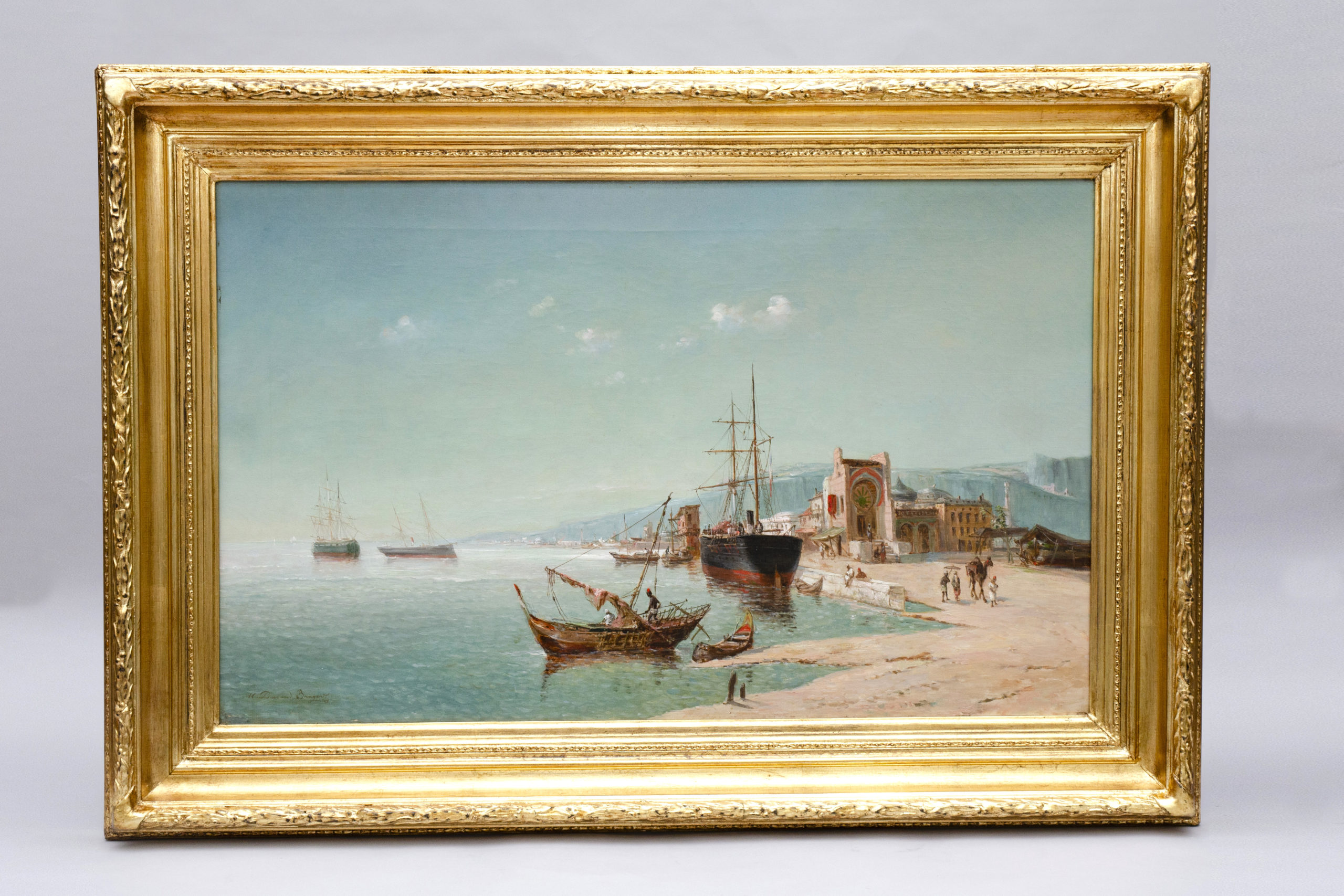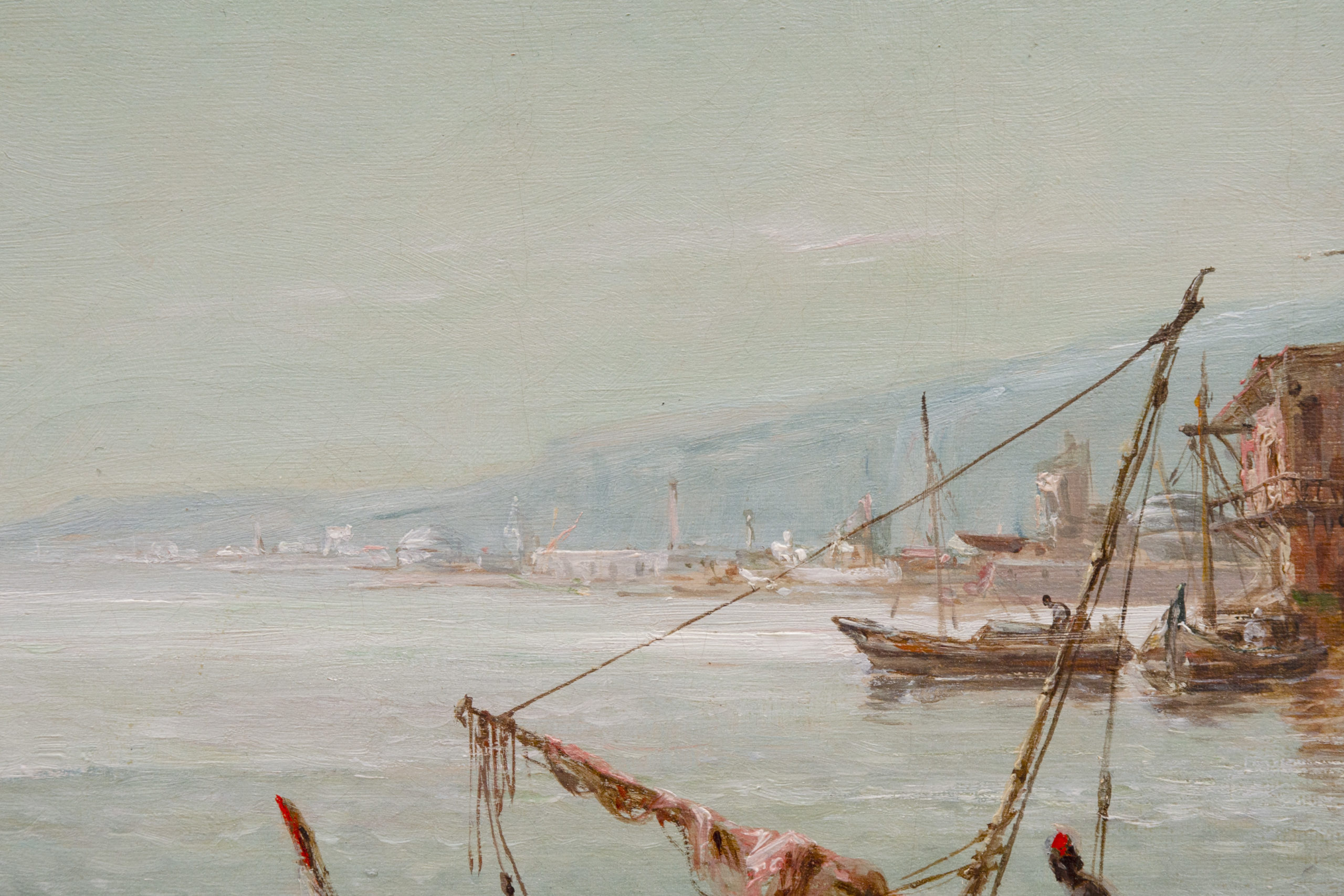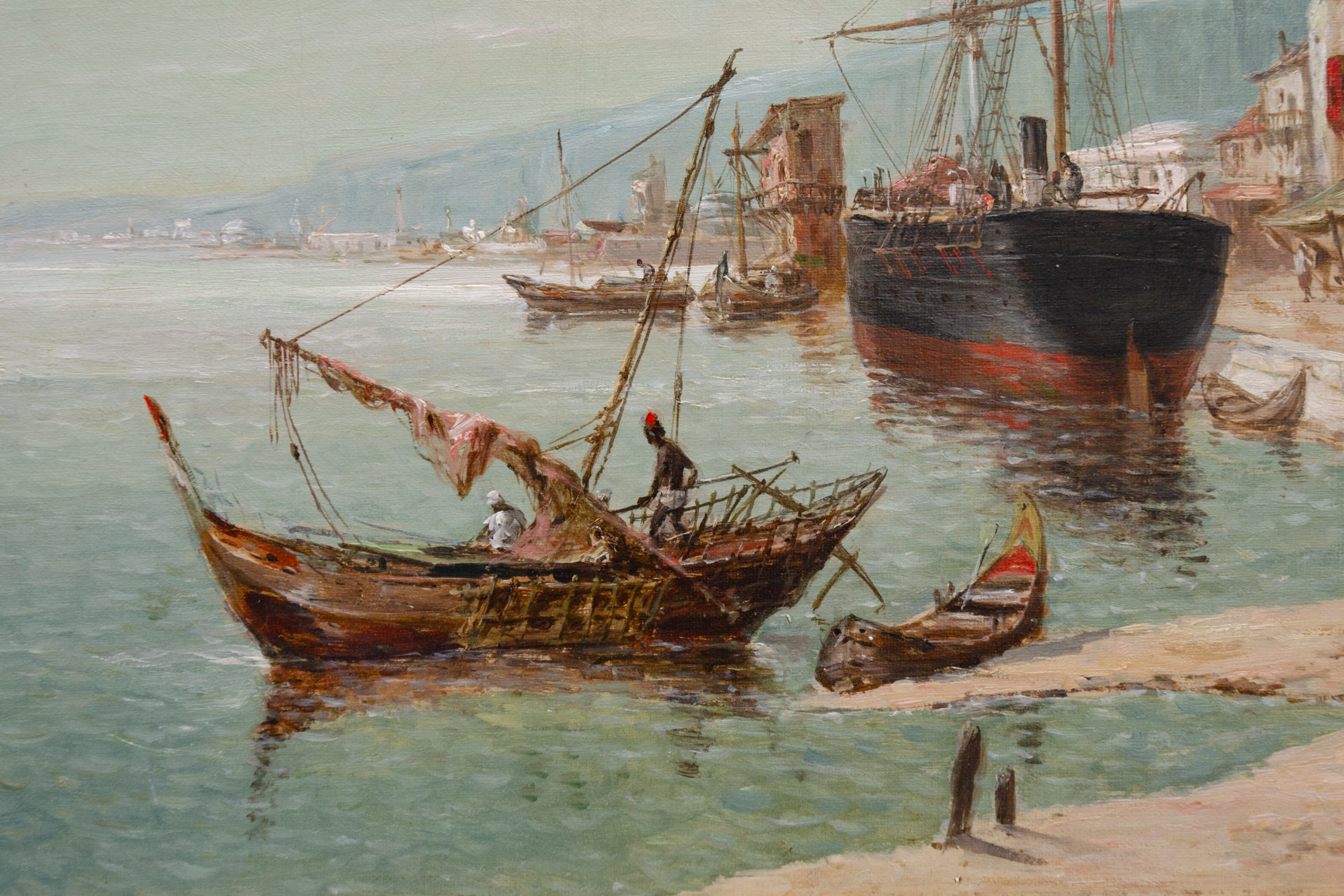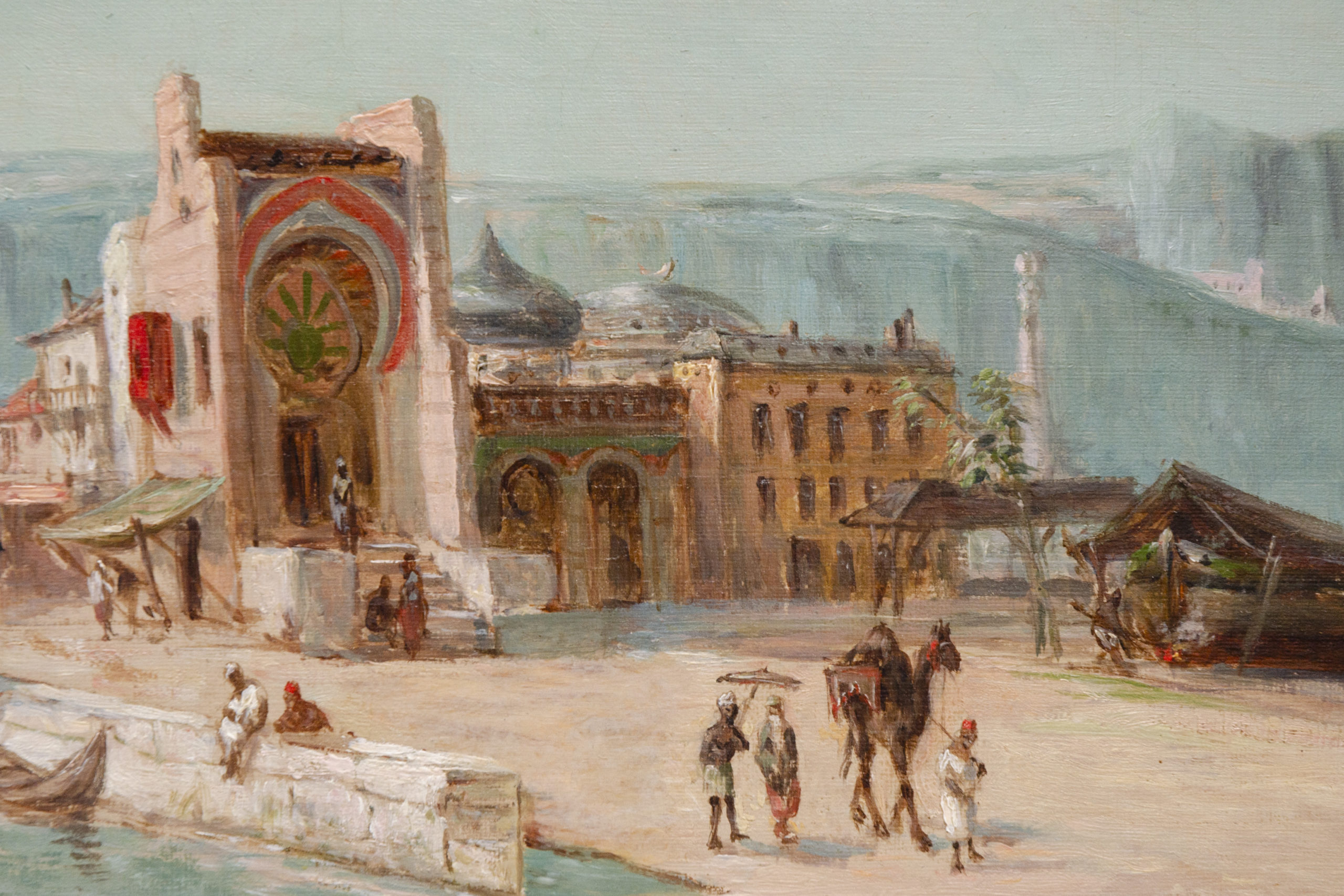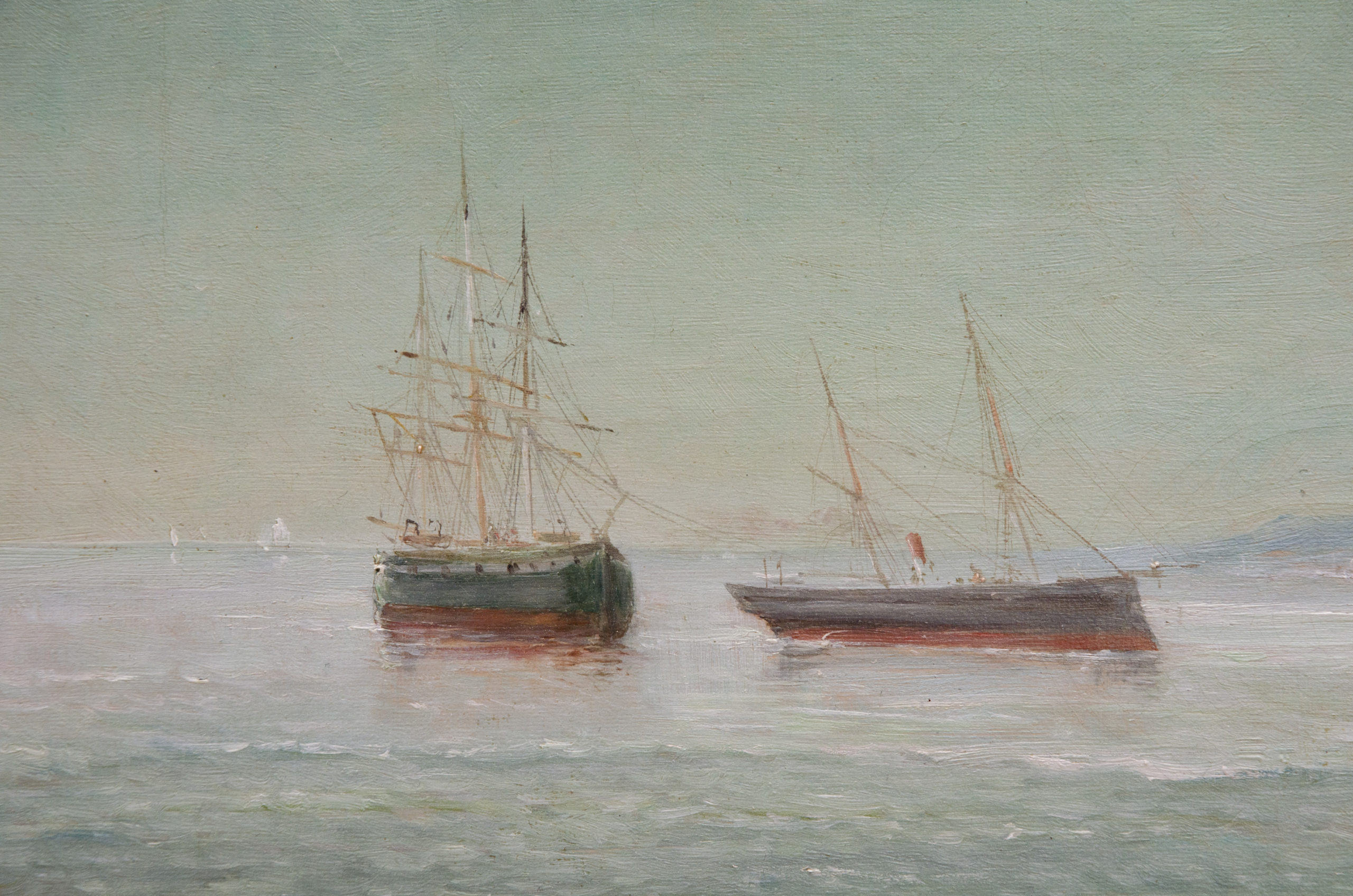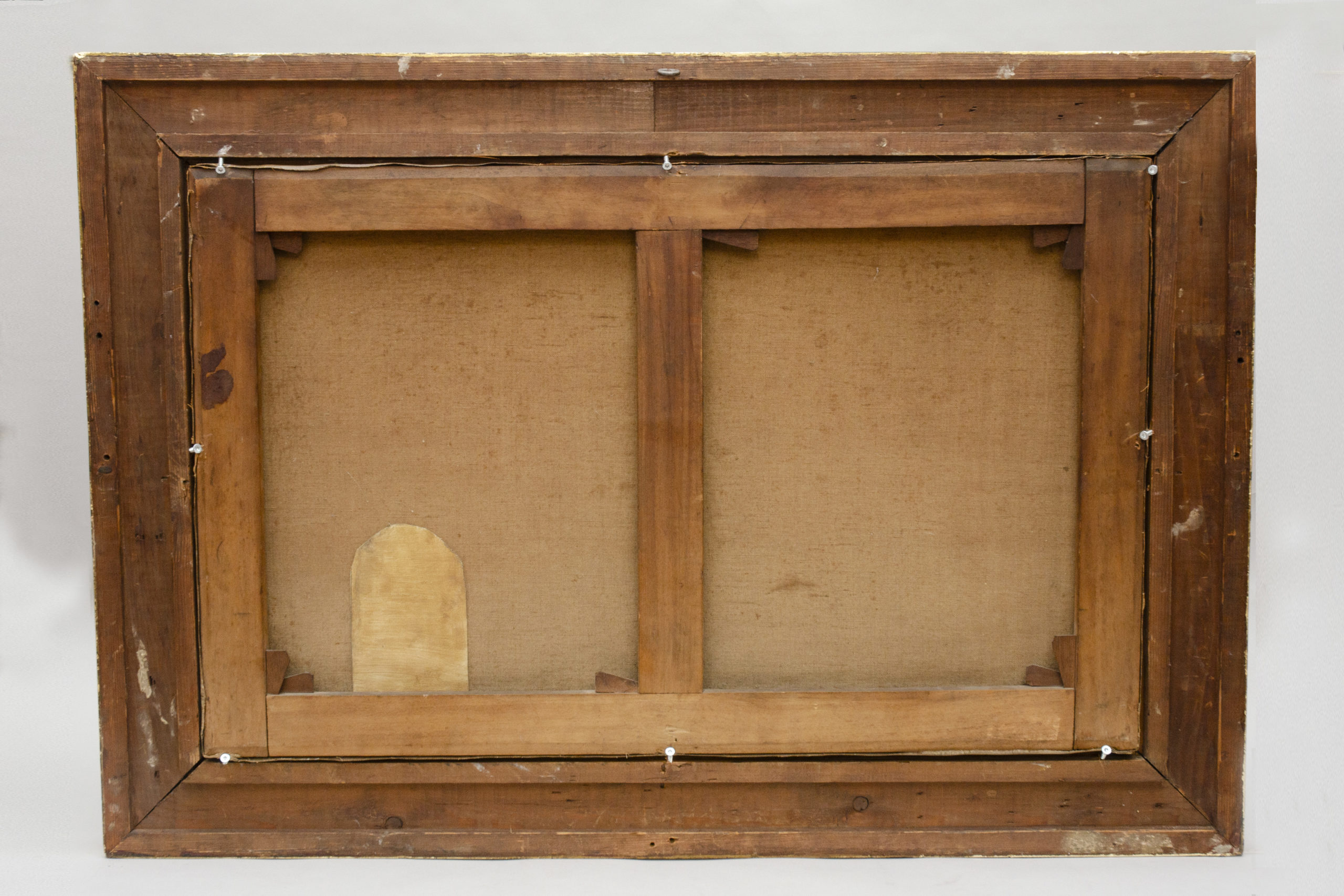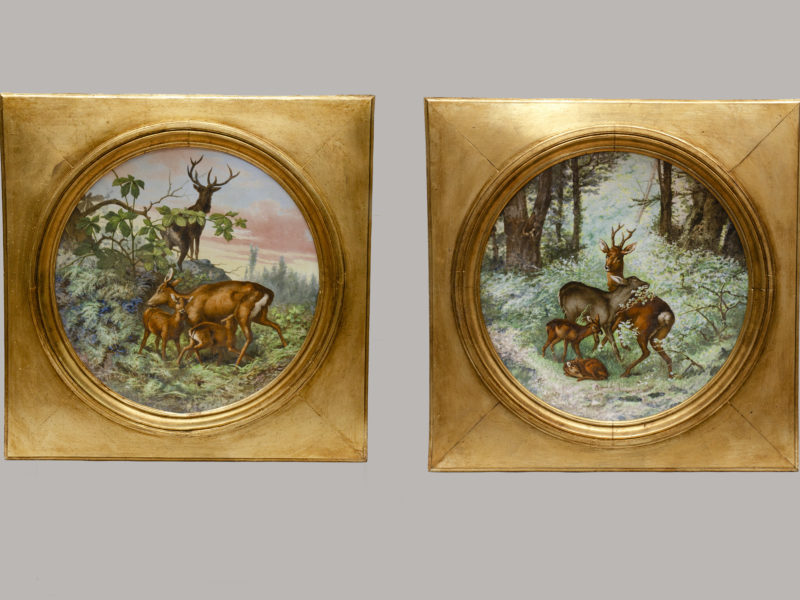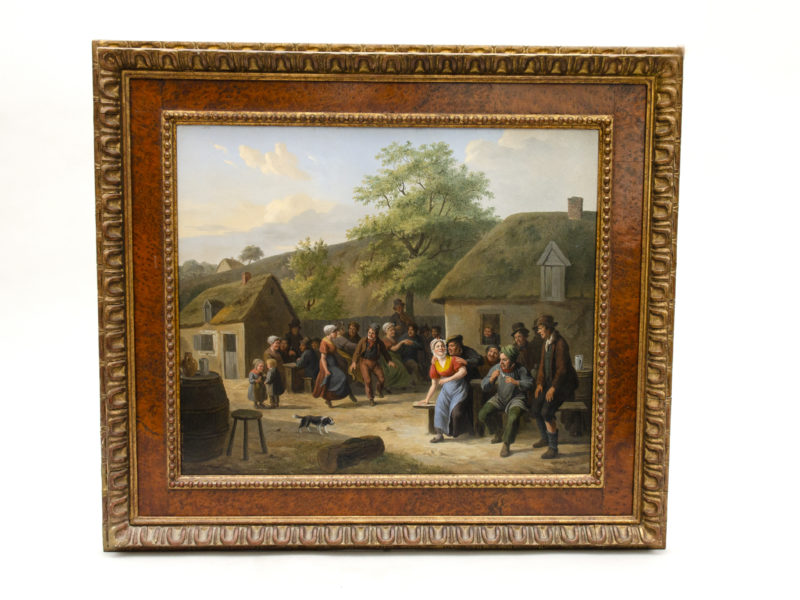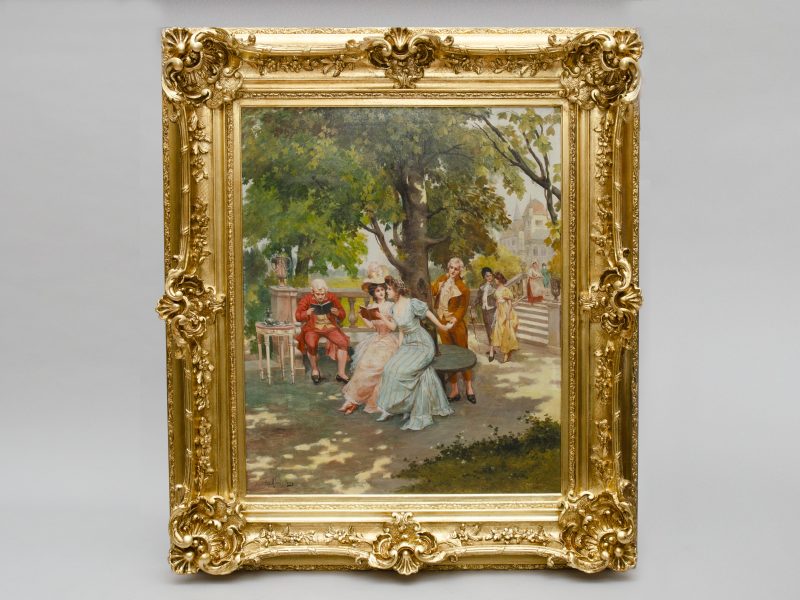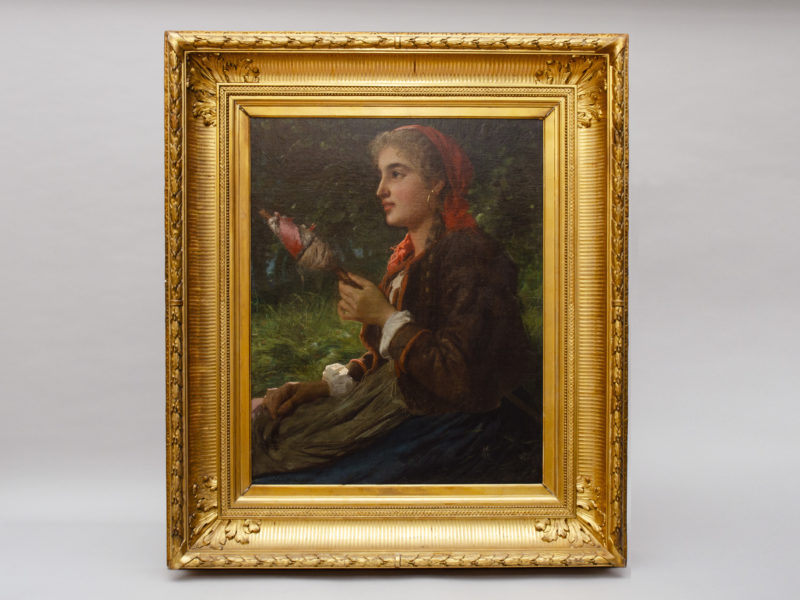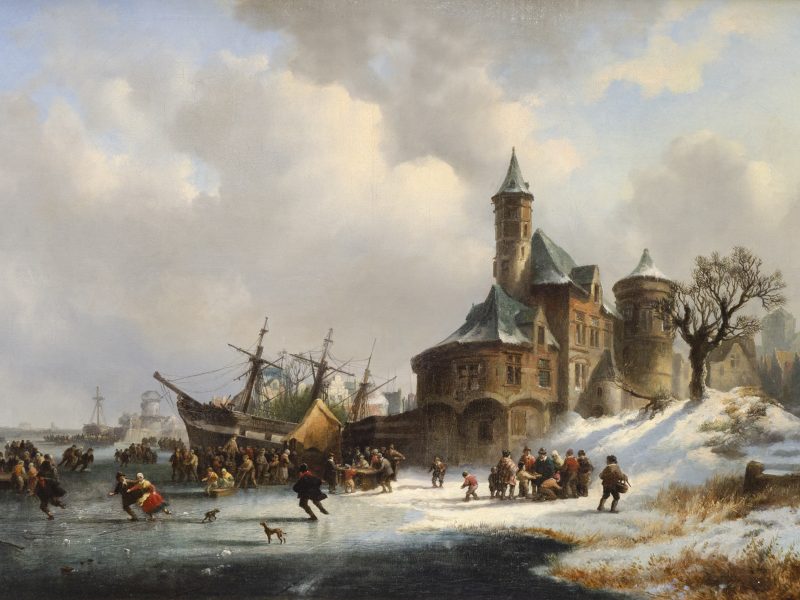“Oosters havenzicht” van Jean-Baptiste Durand-Brager
6.500€
Op voorraad
Geanimeerd uitzicht op de haven, waarschijnlijk Haifa. Een groot tweemastschip ligt aan de oever. Uitzicht op de berg Karmel op de achtergrond. Mooie heldere lucht en levendige zuidelijke kleuren. Penseelstreken in het water. Gesigneerd linksonder. Olieverf op doek met originele lijst. Professioneel gereinigd en opnieuw gelakt. Lijst gerestaureerd.
Afmetingen: H 50 x B 80 cm – H 70 cm x B 100 cm
Franse school uit de tweede helft van de 19e eeuw.
Liter: Geboren in de buurt van Doll-de-Bretagne, 1814 en overleden in Parijs, 1879. Schilder van zeegezichten en militaire onderwerpen.
Hij trad toe tot het atelier van Eugene Isabey, na verschillende reizen door Europa, de Afrikaanse kust, Senegal en Azië.
Hij nam deel aan lange reizen/missies om onderwerpen te schilderen in opdracht van officieren van de Franse marine.
In 1840 nam hij deel aan de expeditie om de as van Napoleon van het eiland Sainte-Hélène naar Frankrijk te brengen. Hij publiceerde een folio met teksten en officiële stukken over de reis, naast twee olieverfschilderijen op doek in de Salon van Parijs.
In 1843 keerde hij terug naar Frankrijk, waar hij ‘De slag tussen de Franse marine en de Britse marine’ schilderde. Het jaar daarop werd hij door de Franse regering gevraagd om twee grote schilderijen te maken: ‘De bombardementen op Mogador’ en ‘De verovering van het eiland Mogador’. In 1844 werd hij onderscheiden met het kruis van het ‘Legion d’Honneur’ en in 1865 werd hij officier in het leger.
Hij kreeg de opdracht om 21 schilderijen te maken die de veldslagen van de Krimoorlog uitbeelden voor de galerijen van Versailles. Deze werden in 1857 op de Salon tentoongesteld, wat de koning van Oostenrijk ertoe bracht hem in 1866 een schilderij te laten maken van de slag bij Lissa (het huidige Vis). Later werkte hij zelfs voor de Russische keizer, voor wie hij ‘De slag bij Singapore’ schilderde.
In 1869 maakte hij voor Versailles een werk met de titel ‘De tweede slag tussen het Japanse leger en de geallieerden’.
Zijn zeegezichten staan bekend als echte documenten, hoewel zijn penseel een gevoelige manier heeft om de natuur en landschappen weer te geven.
Lit: In de 18e eeuw stond Haifa onder Ottomaans bewind tot 1918, met uitzondering van twee korte periodes: in 1799 veroverde Napoleon Bonaparte Haifa als onderdeel van zijn mislukte campagne om Palestina en Syrië te veroveren, maar trok zich in hetzelfde jaar terug; en tussen 1831 en 1840 regeerde de Egyptische onderkoning Mehemet Ali, nadat zijn zoon Ibrahim Pasha de macht had overgenomen van de Ottomanen. In de jaren na de Egyptische bezetting groeide Haifa in bevolking en belang, terwijl Acre een neergang doormaakte. De komst van de Duitse Templers in 1868, die zich vestigden in wat nu bekend staat als de Duitse kolonie van Haifa, was een keerpunt in de ontwikkeling van Haifa. De Templers bouwden en exploiteerden een stoomcentrale, openden fabrieken en startten een koetsdienst naar Acre, Nazareth en Tiberias, waarmee ze een belangrijke rol speelden in de modernisering van de stad.
Op voorraad

